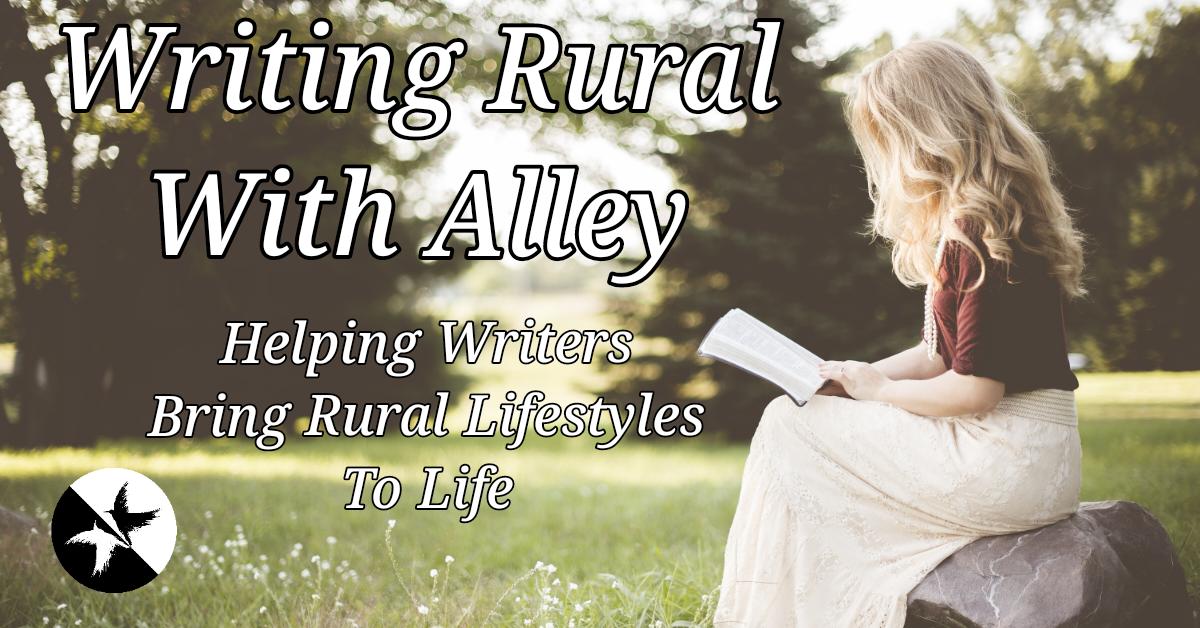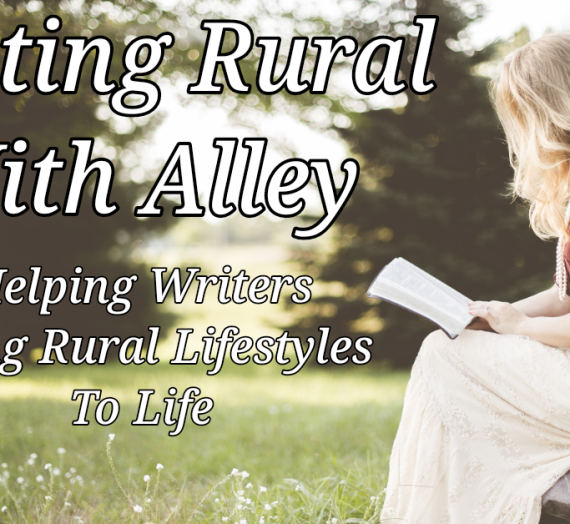What uses could fall leaves have inside the home? What is a leaf mold? Why would a farmer put leaves in a doghouse? What did I burn with leaves but without fire? Find out on this episode!
Welcome to Writing Rural with Alley, the fiction writer’s inspiration station for rural life and lifestyles, from historical to post-apocalyptic, helping you bring your rural stories to life! I’m Alley, and this is episode (#) (title). Stick around to the end to find out all the ways things could possibly go wrong. Now, let’s get into this.
It’s autumn here in my part of the hemisphere, and that means fall leaves. If you live in the city, you might be raking them up to get rid of them. If you live in rural areas, you are likely wondering what monster is trampling the leaves, only to find a couple of little squirrels playing. Many people fondly remember jumping in piles of leaves as kids. However, fall leaves have many other uses. Today, we will cover many of them.
Historically, leaves were gathered up and used in the compost. They are high in nitrogen and calcium, two things most garden plants need. Also, they attract earthworms and other garden-beneficial organisms.
Worms are very good for the garden as they help the soil to better absorb water. Their burrowing can make minerals available to the plants that would not be otherwise. They break down organic matter such as, can you guess it, leaves! They eat the leaves. Their poop is a type of fertilizer, and you don’t even have to pay for it.
However, leaves such as walnuts and eucalyptus have a natural herbicide. If added to your compost, it will have a detrimental effect on the seeds you try to plant in the spring, and they will not sprout as many as they would otherwise.
A variation of this is called a leaf mold. Basically, it is a pile of leaves that is left to decompose in a single spot until it turns into compost. This is a slower process and will take at least one year, sometimes even longer. The length depends on the pile size and the weather in the area. It isn’t hard to do; frankly, I’ve done this several times, on accident. I may have forgotten to place the kid’s leaf pile in the compost until after the snow came. A compost pile is specifically for food waste or even poop; sometimes, that will help garden planets. While leaves can be added to the compost, a leaf mold is only leaves.
On the same subject, leaves are great for kids to play in. Plus, the dogs and squirrels love them. On the downside, they can hide creepy crawlies in them. When my children were very young, we lived in snake country and would either have to rake a new pile every day or check the leaf pile before allowing the kids to play in. Spiders, snails, worms, some types of caterpillars, and even more bugs can be found in leaf piles, but rarely is anyone bitten by a spider in this case. They usually just hurry away.
Another thing leaves are used for in the garden is mulch. They can be chopped up for this or used whole. You might need a deeper layer if they are whole, but they work just as well. They can be saved for the spring and used to help keep the ground damp and stop weeds from growing. They can also keep perennials like strawberries safe from harsh freezes. This is done by placing a thick layer of leaves over them in the fall, and it can be taken off when there is no fear of freezing again. Although, if it is placed on too early in the fall or on a warm day, it could cause the plant’s roots to burn. I made this mistake. It is best to take it off on hot days and place it back on at night to keep the plants from burning.
Another way it is commonly used is for root plants that are planted in the late winter or early spring when frost or even snow are still likely. This would include things such as the potato or kale. These will keep the roots of a root plant safe in the freezing weather, as long as there is a thick-enough layer.
Another purpose is dry leaves for fire making. This would be great to take an ember from something like a bow drill. They could even potentially take a spark from flint and steel. I know many people who use matches and lighters to light a bundle of dry leaves and start a fire. Many homes that rely on woodstoves or fireplaces for heat save them for use in the winter. Remember they want dry leaves, not damp ones, or they will mold and mildew. No one wants to smell that!
Leaves burn well and have a very distinct smell. I can be driving by somewhere and can tell if they are burning leaves without seeing, but only smelling the smoke. If your character has been around many fires, they will be able to tell also.
The last thing I will cover today is that leaves are good insulation. Okay, maybe that feels redundant, but hang on. In history, today, and I assume in an apocalypse, leaves have been used to insulate homes. Yes, you heard that right, homes. Historically, they used anything they could to make a home warmer, and leaves are abundant in forests.
My father tells stories of very poor people in the 60s using bags of leaves stapled to the wall to insulate their homes. He said the walls would be covered in them from floor to ceiling. I imagine they would keep it a ways back from any heat sources since leaves are easy to light on fire. In modern times, there is modern insulation that uses leaves.
Many dog houses are insulated for the winter with leaves. Before you ask why anyone would have a dog out in winter, working farm dogs are not house pets and need a safe, warm place when they are not working. If using leaves, the best plan is to stuff the dog house until it can’t hold any more leaves. The dogs will burrow out a place that is the perfect size for them, and it will be extra warm.
There is also a survival hack that covers insulation and fire-starting. If your character is lost in the woods, for whatever reason, they can fill their jacket or even their shirt with fallen leaves. This will be insulation for them. Also, if they need to start a fire, but the ground is wet from rain or dew, that’s okay; the leaves are dry. They can use them to help start a fire.
Fun fact: Sugar maples are considered North America’s most beautiful fall leaves. They can be yellow, burnt orange, or red.
What could possibly go wrong:
Likely to go wrong: Your character’s child, or maybe even your character, jumps into a pile of leaves only to find a snake in the pile with them.
Likely to go wrong: Your character tries to make a leaf mold, and when the wind picks up, half or more of their leaf pile blows away in the wind.
Possible to go wrong: Your character puts leaves down as mulch on a strawberry plant because it will be cold that night. The next day, it is a hot day, and they forget to take the leaves off, causing the plant’s roots to burn, and the plant dies off.
Possible to go wrong: Your character saves leaves for fire making in the winter but doesn’t ensure they are dry first and they mildew or grow mold.
Unlikely to go wrong: Your character is playing in a leaf pile and suddenly starts sneezing and can’t stop. While not common, dead leaves can cause flare-ups of mold allergies as they decay.
Unlikely to go wrong: Your character adds a lot of walnut leaves to their compost. After using it in the garden, the natural herbicide of the leaves kills all the seeds they are trying to grow in their garden.
Improbable by still technically in the realm of possibilities: Your character jumps into a leaf pile, only to find a timber rattlesnake in the leaves. This could be deadly.
Improbable by still technically in the realm of possibilities: Your character insulates their entire home with bags of leaves. One day, a spark pops out of the fireplace, catching one of the bags on fire and quickly spreads to the other bags, catching the whole house on fire.
Helpful links to learn more!
https://www.thespruce.com/making-and-using-leaf-mold-2539475
https://www.elitetreecare.com/2018/10/7-uses-for-autumn-leaves/



